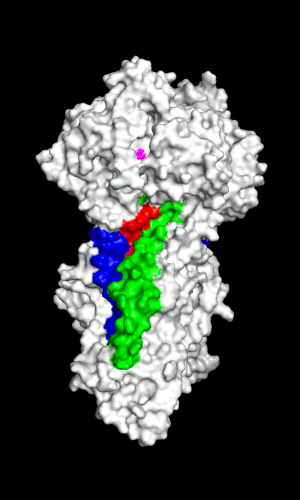The intricate secrets of cellular import/export
Oeiras, 07.06.2011
Living cells must exchange products with their surroundings. Some of these changes require specific membrane proteins, which at the expense of energy, transport substances in or out of the cell. ITQB researchers from the Protein Modeling and Molecular Simulation Labs set out to see how energy promotes transport and by computer simulation obtained a picture of the protein structural changes occurring in the process.
The findings, now published in the journal Proteins, provide new clues to the mechanism of the so called ABC transport ers.
 The cellular energy currency is ATP: when ATP molecules are broken down, the released energy can be used. ATP binding cassette (ABC) transporters are able to break down ATP – in their catalytic domain - for unidirectional transport of solutes across the membrane – through their transmembrane domain. In their work, researchers compared the structure of an ABC transporter before and after ATP hydrolysis and observed that the structural changes at the catalytic sites are propagated throughout the transporter, leading to the opening of the channel.
The cellular energy currency is ATP: when ATP molecules are broken down, the released energy can be used. ATP binding cassette (ABC) transporters are able to break down ATP – in their catalytic domain - for unidirectional transport of solutes across the membrane – through their transmembrane domain. In their work, researchers compared the structure of an ABC transporter before and after ATP hydrolysis and observed that the structural changes at the catalytic sites are propagated throughout the transporter, leading to the opening of the channel.
This observation suggests that the ATP energy is only required for the gate opening. Researchers believe that these computational results provide further details on the transport process that may now be tested experimentally.
Original Article
Proteins: Structure, Function, and Bioinformatics Volume 79, Issue 6, pages 1977–1990, June 2011
Conformational changes induced by ATP-hydrolysis in an ABC transporter:
A molecular dynamics study of the Sav1866 exporter
A. Sofia Oliveira, António M. Baptista, and Cláudio M. Soares







